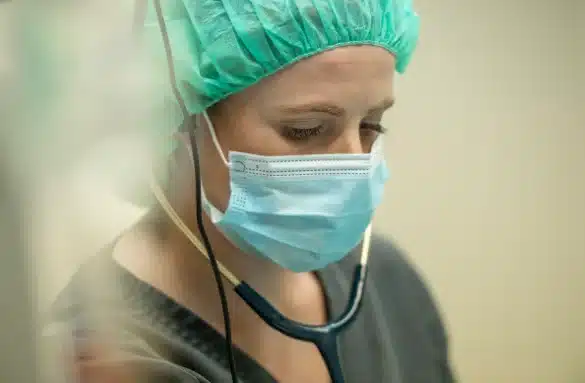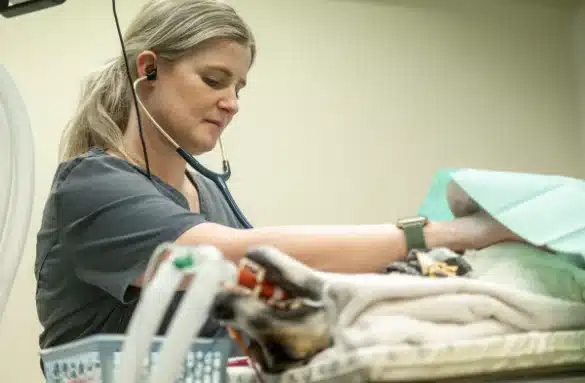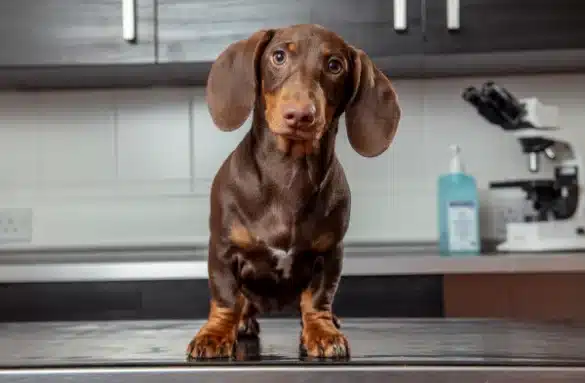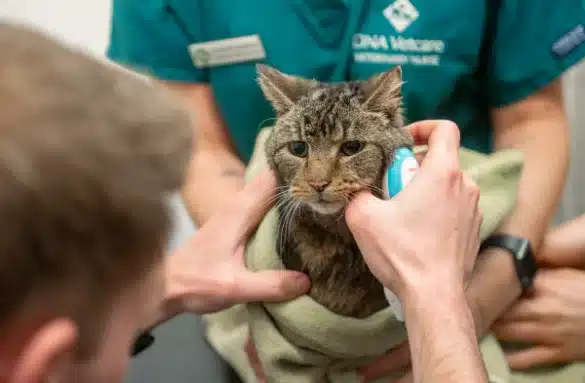Suture Care & Stitch Removal
for Pets in London
Ensure proper healing and comfort for your pet – expert stitches care for pets close to home!
At The Vet on Richmond Hill, we provide professional suture care and removal services to support your pet’s recovery after surgery or injury.
Whether your pet has had routine surgery or treatment following an accident, proper post-op care, including stitch management, is essential for a full and comfortable recovery.
Our experienced team offers suture removal and aftercare support for pets in Richmond, Sheen, Hounslow, Brentford, Whitton, or Twickenham.

The importance of proper suture care
Post-operative suture care plays a critical role in preventing infection, promoting healing, and avoiding complications such as wound reopening or irritation.
Increasingly, vets use buried stitches in the skin that dissolve on their own, but these still need careful monitoring to ensure healing is progressing normally.
Left unmanaged, your cat or dog’s stitches can cause discomfort, inflammation, or even lead to infection, which is why timely professional removal is key.
What to expect at a suture removal appointment
Our veterinary nurse or vet will begin with a thorough examination of the healing site to ensure the wound is closed and free from infection.
We’ll gently remove external stitches or skin staples, using sterile tools to ensure your pet is comfortable and safe throughout the process.
If absorbable sutures were used internally, we’ll check for any external signs of irritation and confirm proper healing.
We’ll also provide a tailored aftercare plan, including advice on exercise restrictions, bathing, wound cleaning, and monitoring for signs of infection.
You may notice your pet becoming more comfortable and mobile immediately after stitch removal, especially if irritation was present.

Suture aftercare for every pet
Monitoring your pet’s healing progress is just as important as the initial surgery.
We recommend a post-op check 2–3 days after surgery to assess healing and provide wound care advice, followed by a second check at 10–14 days for stitch removal if needed.
If your pet is licking or chewing at the wound site, we may recommend protective options to prevent irritation or complications.
This may include an Elizabethan collar (also known as a Buster Collar or the “collar of shame”). It’s important that the collar is the correct size to properly prevent licking, as this can introduce infection very quickly.
There are also alternative options such as medical pet shirts (body suits) and inflatable collars, which may be suitable depending on your pet.
For dogs or cats with sensitive skin or conditions that slow healing, we’ll tailor the timeline and care plan accordingly.
Suture care for dogs
Dogs may become more active before their wound is fully healed, so controlled activity and monitoring are crucial.
We’ll advise on leash walks, wound hygiene, and when your dog can return to their normal routine.


Suture care for cats
Cats may hide signs of discomfort or lick their stitches excessively.
Our team will guide you on how to care for your cat post-op, and when it’s safe to remove your cat’s stitches or reduce restrictions.
Dane’s Tip:
Keeping your pet calm and rested after surgery is just as important as the operation itself. Our free post-op checks ensure you’re supported every step of the way. Together, we’ll make recovery as smooth and stress-free as possible.
Caring for the healing site
We’ll show you how to gently clean the area (if needed), monitor for swelling, redness, or discharge, and help avoid complications like infections or reopening.
Never remove your pets’ stitches yourself. Professional removal ensures safe healing and reduces the risk of injury or trauma.
If your pet is on medication, we’ll guide you on dosage and timing to manage pain or inflammation as needed.
Get in touch
Book your pet’s stitch removal appointment with our caring team and ensure a healthy, stress-free recovery.



